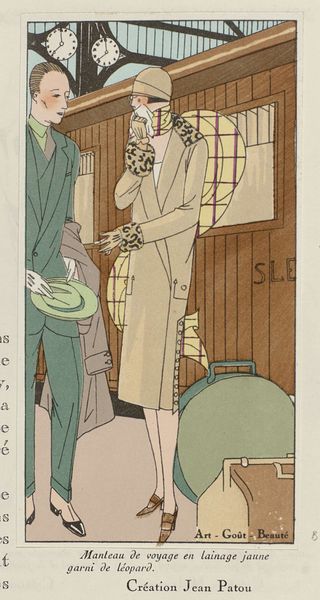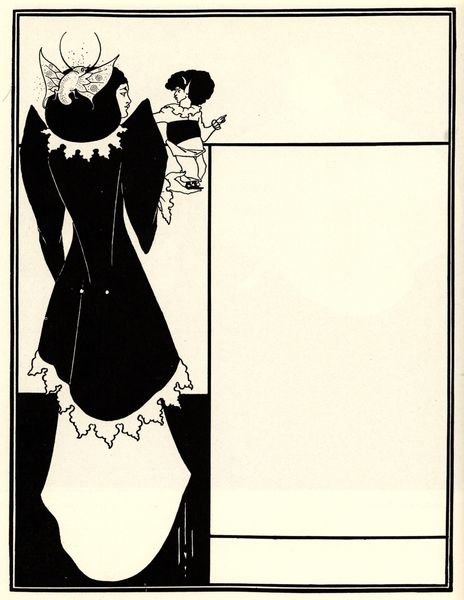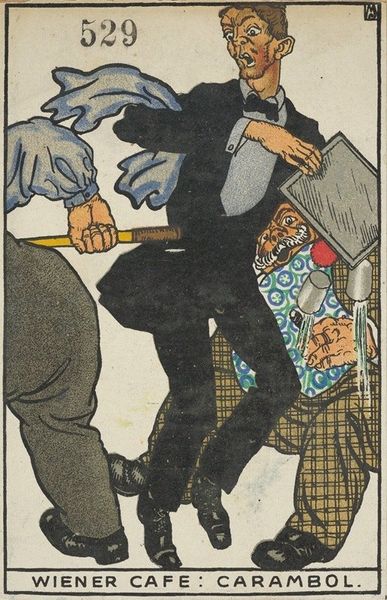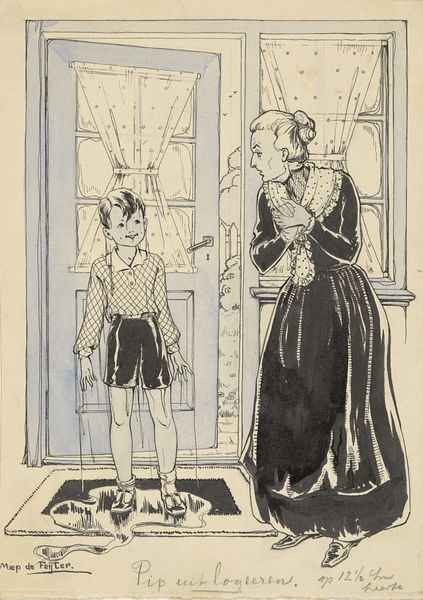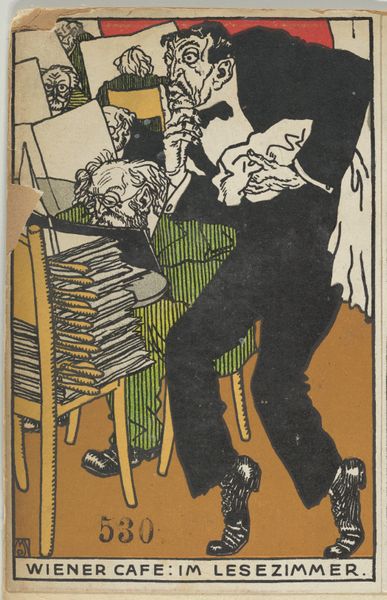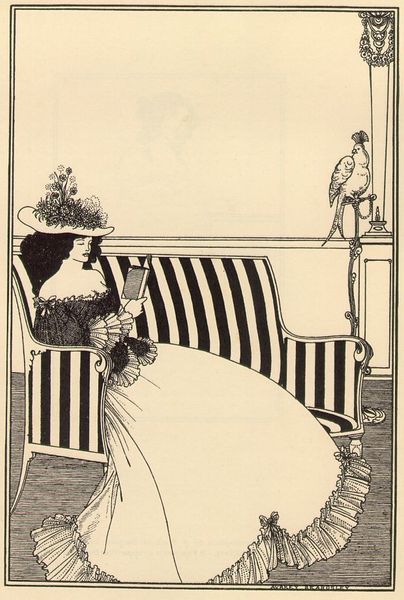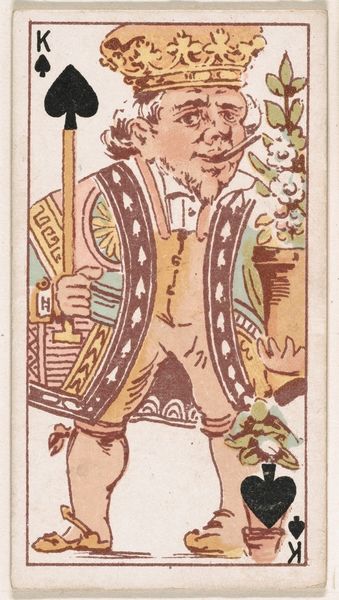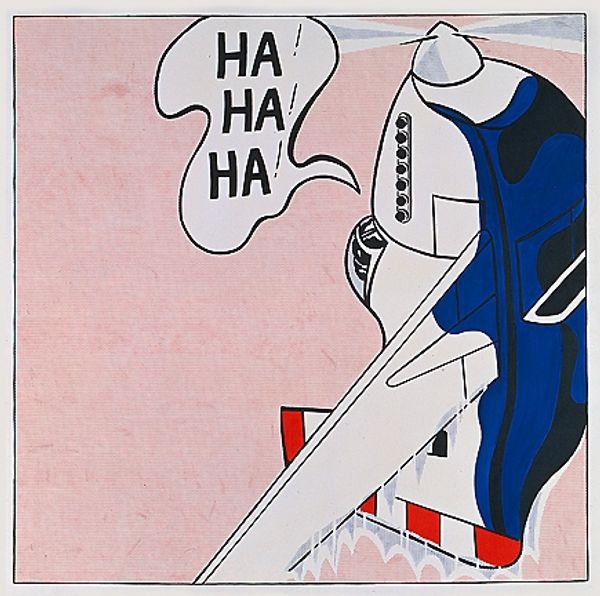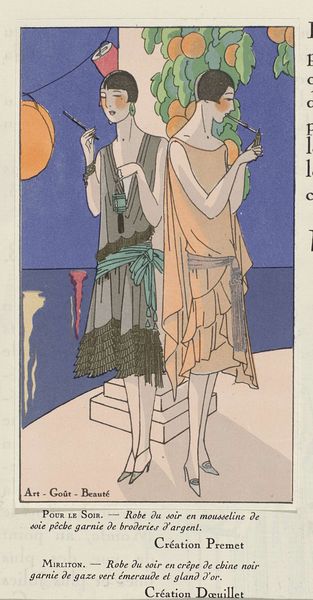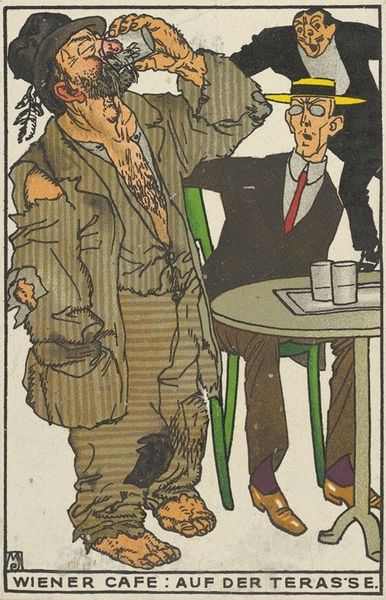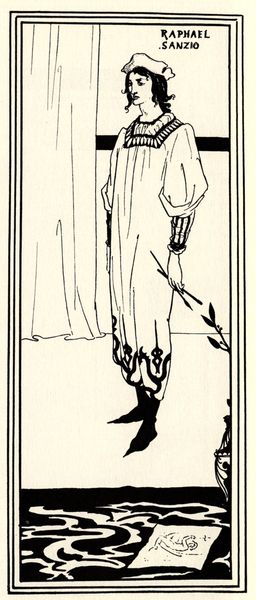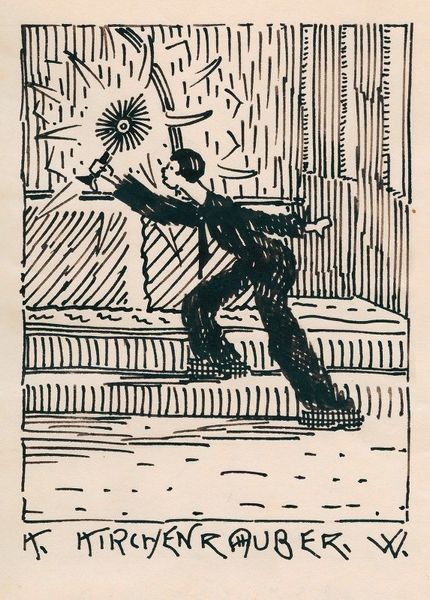
Dimensions: height 158 mm, width 72 mm
Copyright: Rijks Museum: Open Domain
Editor: This is an illustration titled "Art-Goût-Beauté, 1924: Pascaline.-Robe d'après-midi," presumably a print, maybe a drawing, depicting a woman in a stylish dress. I'm struck by the angular, almost industrial feel of the dress design; it’s so different from the flowing lines I often associate with Art Nouveau. What do you make of the materiality and the design? Curator: The stark lines and the graphic black and white patterns aren’t just about aesthetics; they speak to the rise of industrial production. Look at how the dress, described as being from "Création Douillet," becomes a commodity, something reproducible via printing. How does that democratization affect the value assigned to "beauty"? Is this shifting art away from singular creation and toward mass consumption? Editor: That’s fascinating. The print *is* meant for mass circulation, offering fashion ideas to a broad public. So the actual *making* of the art has a direct link to its intended use. But the “handmade” is alluded to in “lingerie blanche” details; how do you think this handmade touch contributes to its market appeal? Curator: Exactly. We have to think about the division of labor, here. The illustration itself is a manufactured image, while it depicts a garment requiring a very different form of making: sewing, assembling, and so forth. That "lingerie blanche" adds a perceived touch of luxury and uniqueness. The tension lies in wanting to look *exclusive* while participating in mass culture. Consider where those details are added: the cuffs and neck, right on the body of the illustrated form; in the actual, real-world manufacturing, labor and wages are divided unequally. Editor: I never thought about how the labor is implicit in those little details! It shifts my whole perspective. Curator: Precisely! By considering the process of production, both in the artwork itself *and* in what it depicts, we start to see the deeper cultural and economic forces at play. It shows how beauty and consumption become intrinsically linked to materiality. Editor: I’m definitely going to pay more attention to how things are made, and who makes them. Curator: Wonderful. Always remember: to consider art, examine first how and why that artwork came to be.
Comments
No comments
Be the first to comment and join the conversation on the ultimate creative platform.
